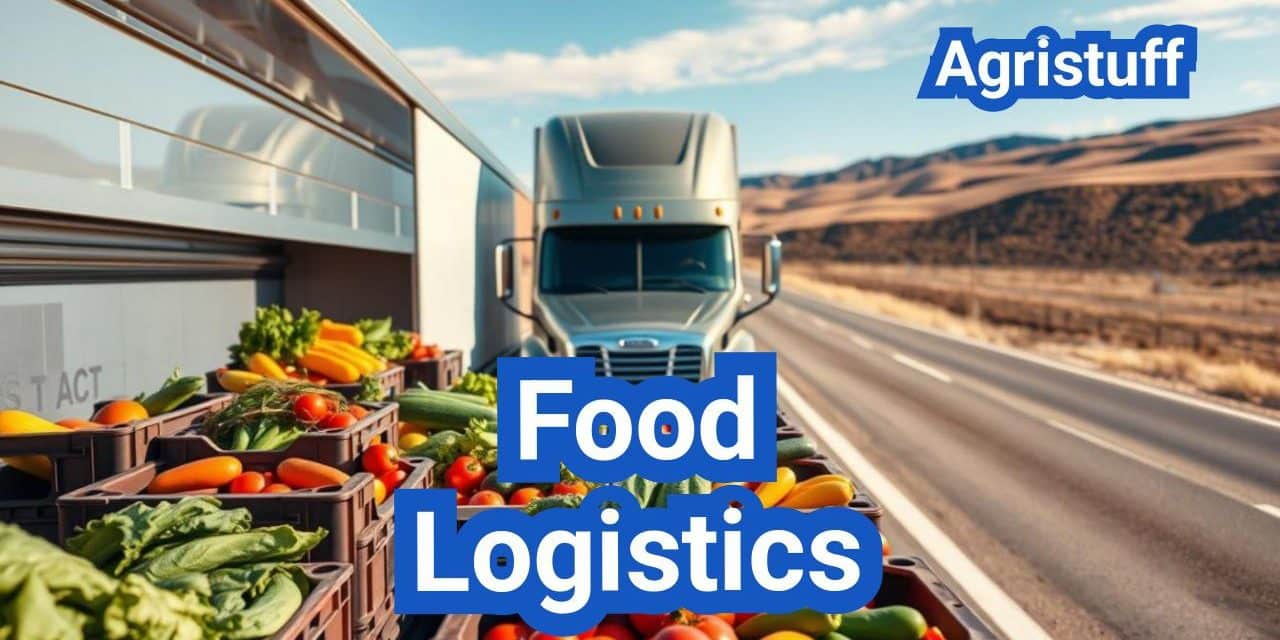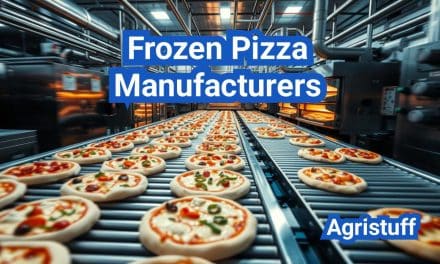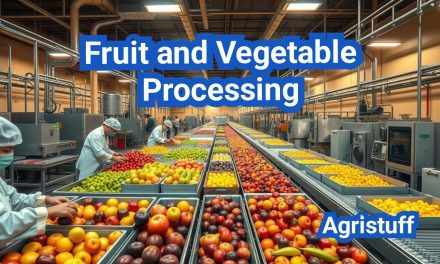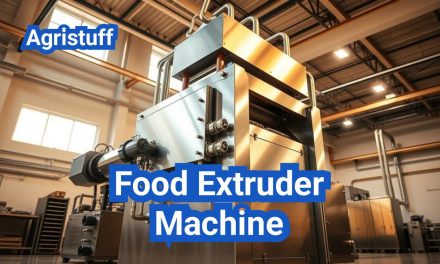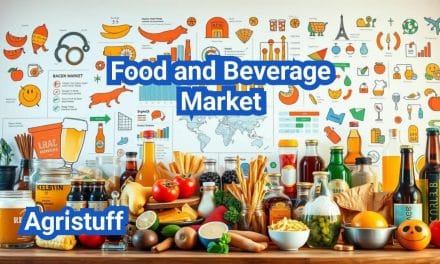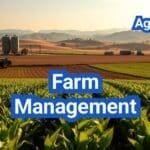The transportation of perishable goods across the United States is a complex task that requires precise cold chain management and refrigerated transportation to maintain product integrity.
Efficient food supply chain operations are crucial to ensure that perishable goods reach their destinations fresh and on time.
The challenges of moving perishables across the country are multifaceted, involving logistical coordination and temperature control to prevent spoilage.
Key Takeaways
- Efficient cold chain management is vital for transporting perishable goods.
- Refrigerated transportation plays a critical role in maintaining product freshness.
- A well-coordinated food supply chain ensures timely delivery of perishables.
- Logistical challenges in moving perishables require precise temperature control.
- Maintaining product integrity is crucial in the transportation of perishable goods.
The Critical Role of Food Logistics in America’s Supply Chain
The U.S. food logistics network is a complex system that requires precision and reliability to ensure that perishable goods are delivered safely. At its core, food logistics encompasses the planning, coordination, and execution of the movement and storage of food products from the point of origin to the point of consumption.
Food logistics is not just about transportation; it’s a multifaceted industry that involves various stakeholders, including farmers, manufacturers, distributors, and retailers. The economic impact of food logistics is significant, as it directly affects the freshness, quality, and availability of food products, ultimately influencing consumer satisfaction and the overall economy.
Defining Food Logistics and Its Economic Impact
Food logistics involves cold chain management, a process that maintains the integrity of perishable goods by controlling temperature and humidity levels throughout the supply chain. The economic impact of food logistics is substantial, with the industry contributing significantly to the U.S. GDP. According to recent data, the food logistics sector is growing due to increasing demand for perishable goods, driven by consumer preferences for fresh and healthy products.
“The food logistics industry is a critical component of the U.S. economy, requiring sophisticated systems to manage the flow of perishable goods.” – Expert in Food Logistics
The role of food logistics companies in the USA is pivotal in this context, as they provide specialized services, including refrigerated transportation, to ensure that perishable goods are delivered safely and efficiently.
The Unique Challenges of Perishable Goods Transportation
Transporting perishable goods presents unique challenges, including maintaining the right temperature, preventing contamination, and ensuring timely delivery. Refrigerated transportation is a critical component of this process, as it helps to maintain the quality and safety of perishable products.
- Temperature control is crucial to prevent spoilage.
- Preventing cross-contamination is essential for food safety.
- Timely delivery ensures that products reach consumers while still fresh.
Effective cold chain management and refrigerated transportation are key to overcoming these challenges, ensuring that perishable goods are delivered to consumers in optimal condition.
Understanding the Perishable Freight Ecosystem

The perishable freight ecosystem encompasses a wide range of products, each with its own unique transportation requirements. This diversity necessitates a comprehensive understanding of the various types of perishable goods and their specific needs.
Types of Perishable Food Products and Their Requirements
Perishable food products include fresh produce, dairy products, meats, and seafood. Each of these categories has distinct temperature and handling requirements to maintain product integrity. For instance, fresh produce like berries and leafy greens require refrigerated transportation to prolong their shelf life.
Temperature control is critical for perishable goods. For example, dairy products must be kept at a consistent refrigerated temperature, typically below 40°F (4°C), to prevent spoilage. Meats and seafood often require even stricter temperature controls, sometimes below -20°C for frozen products.
“The key to successful perishable freight management lies in understanding the specific needs of each product category and ensuring that these needs are met throughout the transportation process.”
Shelf-Life Considerations in Transportation Planning
Shelf-life considerations play a crucial role in transportation planning for perishable goods. Logistics providers must consider the remaining shelf life of products when determining transportation modes and routes. This ensures that products are delivered to their destination with sufficient shelf life remaining for sale and consumption.
Effective transportation planning involves strategic route optimization and timely delivery. For example, using refrigerated trucks (reefers) equipped with real-time temperature monitoring can help maintain the required conditions. Additionally, selecting the most direct routes and avoiding delays are crucial for preserving product freshness.
Food distribution centers are pivotal in managing the flow of perishable goods. These centers are equipped with temperature-controlled storage facilities and advanced inventory management systems to handle perishable products efficiently. By optimizing operations at these centers, logistics providers can significantly enhance the overall efficiency of the perishable freight ecosystem.
Implementing Effective Cold Chain Management
To keep perishable goods fresh and safe, implementing effective cold chain management strategies is essential. Cold chain management refers to the series of actions designed to maintain the optimal temperature for perishable products throughout the supply chain, from production to consumption.
Temperature Mapping and Monitoring Protocols
Temperature mapping is a critical step in establishing a reliable cold chain. It involves measuring and documenting the temperature distribution within refrigerated transportation units or storage facilities. This process helps identify potential hot spots and areas where temperature control may be inadequate.
Temperature monitoring protocols are then implemented to ensure continuous temperature control. These protocols typically involve the use of temperature sensors and data loggers that track the temperature in real-time, providing alerts if the temperature deviates from the set range.
Preventing Cold Chain Breaks During Loading and Unloading
Cold chain breaks occur when perishable goods are exposed to temperatures outside the recommended range, potentially compromising their quality and safety. To prevent this, it’s crucial to optimize the loading and unloading processes.
- Pre-cool refrigerated trucks before loading to ensure they are at the correct temperature.
- Minimize the time perishable goods spend in non-refrigerated areas during transfers.
- Use insulated or refrigerated containers for temporary storage during loading and unloading.
Contingency Planning for Refrigeration Failures
Despite best efforts, refrigeration failures can still occur. Having a contingency plan in place is vital to mitigate the impact of such failures.
Key elements of a contingency plan include identifying backup refrigeration units, establishing emergency contact protocols, and having a clear plan for relocating perishable goods to alternative storage facilities if necessary.
By implementing these strategies, businesses can significantly enhance their cold chain management, ensuring the integrity of perishable products and compliance with food safety regulations.
Selecting the Right Refrigerated Transportation Methods

The selection of refrigerated transportation methods depends on several factors, including the type of goods, distance, and cost considerations. When transporting perishable goods across the U.S., it’s crucial to choose a method that maintains the required temperature range to preserve product quality and safety.
Reefer Truck Specifications and Capabilities
Reefer trucks are a common choice for refrigerated transportation due to their versatility and wide availability. These trucks are equipped with refrigeration units that can maintain specific temperature ranges, making them suitable for a variety of perishable goods.
Key specifications of reefer trucks include:
- Temperature range: Typically between -30°C to +30°C
- Insulation: High-density insulation to minimize temperature fluctuations
- Refrigeration unit: Capable of maintaining consistent temperatures
- Monitoring systems: Advanced systems for tracking temperature and other vital parameters
Intermodal Options for Long-Distance Perishable Transport
For long-distance transportation, intermodal options can offer a cost-effective and efficient solution. Intermodal transport combines different modes of transportation, such as truck, rail, and sea, to move perishable goods.
Benefits of intermodal transportation include:
- Reduced costs: By combining modes, overall transportation costs can be lowered
- Increased efficiency: Intermodal transport can reduce transit times and improve delivery reliability
- Flexibility: Allows for adjustments in transportation plans as needed
Cost-Benefit Analysis of Transportation Modes
Conducting a cost-benefit analysis is essential when selecting a refrigerated transportation method. This involves evaluating the costs associated with different modes of transportation against their benefits.
| Transportation Mode | Cost | Transit Time | Temperature Control |
|---|---|---|---|
| Reefer Truck | High | Fast | Excellent |
| Rail | Moderate | Moderate | Good |
| Intermodal | Variable | Variable | Excellent |
By analyzing these factors, businesses can make informed decisions about the most appropriate refrigerated transportation method for their specific needs.
Advanced Temperature Monitoring Technologies
Advanced temperature monitoring technologies are transforming the logistics of perishable goods by ensuring consistent temperature control during transit. The transportation of perishable goods requires precise temperature control to maintain product quality and safety.
Implementing Real-Time Temperature Tracking Systems
Real-time temperature tracking systems enable logistics companies to monitor the temperature of perishable goods continuously during transportation. This technology helps in identifying any temperature deviations promptly, allowing for immediate corrective actions.
Key benefits of real-time temperature tracking include:
- Enhanced product safety and quality
- Reduced risk of temperature-related product spoilage
- Improved compliance with regulatory requirements
Data Analysis for Proactive Temperature Management
Data analysis plays a crucial role in proactive temperature management. By analyzing temperature data collected during transportation, logistics companies can identify patterns and trends that may indicate potential issues.
Effective data analysis enables:
- Predictive maintenance of refrigeration equipment
- Optimization of transportation routes and schedules
- Improved supply chain visibility
Automated Alert Systems for Temperature Deviations
Automated alert systems notify logistics personnel of temperature deviations in real-time, enabling swift action to prevent product spoilage. These systems are integral to maintaining the integrity of the cold chain.
Features of automated alert systems include:
- Customizable alert thresholds
- Multi-channel notifications (e.g., SMS, email)
- Integration with existing logistics management systems
By leveraging advanced temperature monitoring technologies, logistics companies can significantly enhance the safety and quality of perishable goods during transportation. These technologies not only help in complying with regulatory requirements but also contribute to reducing product loss and improving customer satisfaction.
Ensuring FSMA Sanitary Transportation Compliance

Compliance with the FSMA sanitary transportation rule is not just a legal requirement, but a critical step in ensuring food safety during transportation across the United States. The rule mandates that shippers, carriers, and receivers implement practices that prevent contamination and ensure the safe transportation of food products.
Developing Compliant Standard Operating Procedures
To comply with the FSMA rule, companies must develop and implement standard operating procedures (SOPs) that address the sanitary transportation of food. These SOPs should cover aspects such as vehicle and equipment sanitation, temperature control, and the training of personnel.
Key components of compliant SOPs include:
- Procedures for cleaning and sanitizing vehicles and equipment
- Protocols for maintaining appropriate temperatures during transport
- Training programs for drivers and other personnel involved in food transportation
Creating Effective Documentation Systems
Effective documentation is crucial for demonstrating compliance with the FSMA sanitary transportation rule. This includes maintaining records of vehicle sanitation, temperature monitoring, and personnel training.
| Documentation Type | Purpose | Retention Period |
|---|---|---|
| Vehicle Sanitation Records | To ensure vehicles are properly cleaned and sanitized | 12 months |
| Temperature Monitoring Records | To verify that food is transported within safe temperature ranges | 12 months |
| Training Records | To document personnel training on sanitary transportation practices | 24 months |
Training Programs for Regulatory Adherence
Training is a critical component of FSMA compliance, ensuring that personnel understand the requirements and procedures for sanitary food transportation. Training programs should be comprehensive, covering topics such as:
- The importance of sanitary transportation practices
- Procedures for maintaining temperature control
- The role of documentation in compliance
By developing compliant SOPs, creating effective documentation systems, and implementing thorough training programs, companies can ensure adherence to the FSMA sanitary transportation rule, thereby safeguarding the safety of food products during transportation.
Best Practices in Food Logistics Safety Protocols

Effective food logistics safety protocols are vital for protecting public health and reducing economic losses. Maintaining vehicle sanitation and preventing cross-contamination are critical components of these protocols.
Vehicle Sanitation and Inspection Procedures
Regular vehicle sanitation is essential for preventing the growth of bacteria and other microorganisms that can contaminate perishable goods. This involves thorough cleaning and sanitizing of the vehicle, including the cargo area, walls, and floors. Inspection procedures should be implemented to ensure that vehicles are in good condition and free from contaminants.
Key steps in vehicle sanitation include:
- Pre-cooling the vehicle before loading
- Cleaning and sanitizing the cargo area
- Inspecting the vehicle for damage or contamination
- Maintaining records of sanitation and inspection activities
Cross-Contamination Prevention Strategies
Cross-contamination can occur when different products come into contact with each other or with contaminated surfaces. To prevent this, logistics companies can implement segregation strategies, such as separating products by type or using diversion panels to create separate compartments within the vehicle.
Effective cross-contamination prevention strategies include:
- Segregating products by type or category
- Using diversion panels or other segregation methods
- Implementing cleaning and sanitizing protocols between loads
- Training personnel on cross-contamination prevention procedures
Product Segregation Guidelines
Product segregation is critical for preventing cross-contamination and ensuring that products are stored and transported in a safe and secure manner. Guidelines for product segregation should be developed based on the type of product, its sensitivity to contamination, and other relevant factors.
| Product Type | Segregation Requirements | Rationale |
|---|---|---|
| Raw Meat | Separate from ready-to-eat products | Prevents cross-contamination with bacteria like Salmonella |
| Dairy Products | Store at consistent refrigerated temperatures | Prevents spoilage and contamination |
| Fresh Produce | Segregate by type to prevent ethylene damage | Prevents spoilage and maintains product quality |
By implementing these best practices in food logistics safety protocols, companies can reduce the risk of contamination and ensure that perishable goods are transported safely and efficiently.
Optimizing Food Distribution Center Operations
The efficiency of food distribution centers plays a pivotal role in the supply chain of perishable goods across the United States. These centers are critical in ensuring that products are stored, handled, and shipped under optimal conditions to maintain their quality and safety.
Strategic Facility Location Planning
Strategic location planning is fundamental to the success of food distribution centers. The location should be chosen based on its proximity to major transportation routes, markets, and production areas to minimize transit times and costs. Key considerations include accessibility, land availability, and compliance with local zoning regulations.
- Proximity to transportation hubs
- Market demand and growth potential
- Availability of skilled labor
Implementing Efficient Inventory Management Systems
Efficient inventory management is crucial for the smooth operation of food distribution centers. This involves implementing systems that can track inventory levels in real-time, manage orders effectively, and minimize waste. Advanced technologies such as RFID and inventory management software can significantly enhance operational efficiency.
- First-In-First-Out (FIFO) inventory management
- Real-time inventory tracking
- Automated order processing systems
Temperature-Controlled Zone Design
Temperature control is paramount in food distribution centers, especially for perishable goods. Designing temperature-controlled zones that can maintain specific temperature ranges is essential for preserving product quality. This includes using appropriate insulation, refrigeration units, and monitoring systems to ensure consistent temperatures.
| Product Type | Temperature Range |
|---|---|
| Fresh Produce | 32°F – 40°F |
| Frozen Foods | -20°F – 0°F |
By focusing on these key areas, food distribution centers can optimize their operations, ensuring the efficient and safe distribution of perishable goods across the United States.
Specialized Approaches for Produce Logistics

The success of produce logistics hinges on the ability to implement specialized techniques that address the specific needs of various products. Produce logistics is a complex field that requires a deep understanding of the factors affecting the quality and shelf life of perishable goods.
Managing Ethylene-Sensitive Products
Ethylene-sensitive products, such as kiwis and bananas, require careful handling to prevent premature ripening. Ethylene gas, naturally produced by fruits, can accelerate the ripening process. To manage ethylene-sensitive products effectively, logistics providers must ensure that these products are stored and transported in environments with controlled ethylene levels.
One strategy is to use ethylene-absorbing materials in packaging to reduce the concentration of ethylene gas around sensitive produce. Additionally, separating ethylene-sensitive products from other fruits that produce higher amounts of ethylene can help maintain product quality.
Humidity and Airflow Control Techniques
Maintaining optimal humidity and airflow is crucial for preserving the quality of produce during transportation. Humidity control helps prevent moisture loss, which can lead to dehydration and spoilage. Meanwhile, adequate airflow ensures uniform temperature distribution and prevents the buildup of ethylene gas and moisture.
Logistics providers use various techniques to control humidity and airflow, including the use of ventilated packaging and climate-controlled transportation equipment. By regulating these factors, providers can significantly extend the shelf life of perishable produce.
Seasonal Planning for Harvest Fluctuations
Seasonal fluctuations in produce availability pose significant challenges for logistics planning. To address these challenges, logistics providers must engage in seasonal planning, anticipating periods of high demand and adjusting their operations accordingly.
This involves strategic capacity planning, where logistics providers ensure they have the necessary resources, including refrigerated transportation and storage facilities, to handle peak volumes. By doing so, they can maintain service levels and ensure the timely delivery of produce to markets.
Managing the Economics of Perishable Transportation

The economics of perishable transportation involves a delicate balance between cost, quality, and efficiency. Companies must navigate the complexities of refrigerated logistics while maintaining profitability.
Understanding and Negotiating Reefer Truck Rates
Reefer truck rates are a significant component of perishable transportation costs. To negotiate effectively, companies should understand the factors that influence these rates, such as fuel prices, equipment costs, and demand fluctuations. By analyzing market trends and building relationships with carriers, businesses can secure more favorable rates.
It’s also crucial to consider the total cost of ownership when evaluating reefer truck services. This includes not just the base rate, but also additional costs such as maintenance, insurance, and potential penalties for late delivery or temperature deviations.
Cost Reduction Strategies That Maintain Quality
Implementing cost reduction strategies in perishable transportation requires careful planning to ensure that quality is not compromised. One effective approach is to optimize routes and schedules, reducing transit times and fuel consumption. Another strategy is to invest in advanced temperature monitoring technologies, which can help prevent costly temperature excursions.
Companies can also explore intermodal transportation options, combining different modes of transport (e.g., truck, rail, sea) to achieve cost savings while maintaining service levels. Additionally, collaborative logistics can help reduce costs by sharing resources and expertise among partners.
Calculating the True Cost of Product Loss
Product loss during transportation can have significant financial implications. To calculate the true cost of product loss, companies must consider not just the direct costs (e.g., the value of the lost product) but also indirect costs such as lost sales, damaged customer relationships, and potential regulatory penalties.
By implementing robust quality control measures and investing in data analytics to track and predict potential losses, companies can minimize the occurrence of product loss and its associated costs.
Revolutionizing Last-Mile Food Delivery

Revolutionizing last-mile food delivery requires innovative solutions to maintain the integrity of perishable products. The last-mile delivery phase is critical in the food logistics supply chain, as it directly impacts the quality and freshness of the products when they reach the consumer.
Route Optimization for Urban Perishable Delivery
Route optimization is a crucial aspect of last-mile delivery, particularly in urban areas where traffic congestion can significantly impact delivery times. Advanced routing software can help logistics providers determine the most efficient routes, reducing transit times and fuel consumption.
For instance, a study by a leading logistics company found that implementing route optimization software reduced their delivery times by up to 30% in metropolitan areas.
- Utilizing real-time traffic data to adjust routes dynamically
- Implementing time-window delivery strategies to avoid peak traffic hours
- Optimizing vehicle capacity to reduce the number of trips required
Temperature-Maintained Delivery Vehicle Solutions
Maintaining the right temperature during transportation is vital for perishable goods. Temperature-maintained delivery vehicles equipped with refrigeration units and advanced monitoring systems ensure that products remain within the required temperature range throughout the delivery process.
A notable example is the use of refrigerated vans with multi-temperature compartments, allowing for the simultaneous transportation of different products at various temperature requirements.
| Vehicle Type | Temperature Range | Product Suitability |
|---|---|---|
| Refrigerated Van | -20°C to 0°C | Frozen Foods, Ice Cream |
| Multi-Temperature Van | -20°C to 5°C | Mixed Frozen and Chilled Products |
Delivery Timing Windows and Customer Coordination
Effective customer coordination is essential for successful last-mile delivery. Providing customers with precise delivery timing windows enhances their experience and reduces the likelihood of missed deliveries.
“The key to successful last-mile delivery lies in the ability to synchronize logistics operations with customer expectations, ensuring a seamless and satisfactory experience.” – Logistics Expert
Strategies for improving customer coordination include:
- Offering real-time tracking and updates on delivery status
- Allowing customers to specify preferred delivery times
- Implementing flexible delivery options, such as locker delivery or delivery to neighbors
Partnering with Top Food Logistics Companies in the USA

As the demand for fresh produce and perishable goods continues to rise, the importance of reliable food logistics partners cannot be overstated. Effective partnerships with top food logistics companies are crucial for ensuring the timely and safe transportation of these goods across the country.
Evaluation Criteria for Selecting Logistics Partners
When selecting a logistics partner, several key factors must be considered to ensure that your perishable goods are handled properly. These include:
- Reliability and Punctuality: The ability to deliver goods on time is paramount.
- Temperature Control: Ensuring that perishable goods are kept at the correct temperature during transport.
- Compliance with Regulations: Adherence to food safety regulations and standards.
- Tracking and Monitoring: Real-time tracking to monitor the condition and location of goods.
Service Level Agreements for Perishable Transport
A well-crafted Service Level Agreement (SLA) is essential for defining the expectations and responsibilities between the logistics provider and the client. Key components of an SLA for perishable transport include:
- Performance Metrics: Clear definitions of how performance will be measured.
- Response Times: Agreed-upon response times for issues such as temperature deviations.
- Communication Protocols: Regular updates and notifications regarding the status of shipments.
Collaborative Planning with Transportation Providers
Collaborative planning with transportation providers is vital for anticipating and mitigating potential disruptions. This involves:
- Joint Risk Assessment: Identifying potential risks and developing strategies to mitigate them.
- Flexibility: Being prepared to adjust plans in response to unforeseen circumstances.
- Continuous Improvement: Regularly reviewing and improving logistics processes.
By carefully evaluating potential logistics partners, establishing comprehensive service level agreements, and engaging in collaborative planning, businesses can ensure the safe and timely transportation of their perishable goods.
Leveraging Technology for Superior Food Logistics

The integration of cutting-edge technologies is revolutionizing food logistics, making it possible to maintain the integrity of perishable goods throughout the supply chain. By adopting innovative solutions, companies can enhance efficiency, reduce waste, and improve customer satisfaction.
Implementing Blockchain for End-to-End Traceability
Blockchain technology is being increasingly adopted in food logistics to provide end-to-end traceability. This involves creating a digital ledger that records every transaction and movement of goods throughout the supply chain. By utilizing blockchain, companies can enhance transparency and accountability, reducing the risk of contamination and improving recall processes.
The use of blockchain also enables real-time tracking, allowing stakeholders to monitor the condition and location of perishable goods at every stage. This level of visibility is crucial for maintaining the quality and safety of products.
Predictive Analytics for Demand Forecasting
Predictive analytics is another technology that is transforming the food logistics industry. By analyzing historical data, market trends, and external factors, companies can forecast demand with greater accuracy. This enables them to optimize inventory levels, reduce waste, and improve supply chain efficiency.
Predictive analytics can also help companies to identify potential disruptions and develop contingency plans. By anticipating changes in demand or supply chain disruptions, businesses can minimize the impact on their operations and maintain customer satisfaction.
Warehouse Automation Systems for Perishables
Warehouse automation is becoming increasingly important in food logistics, particularly for perishable goods. Automated systems can help to maintain consistent refrigeration, reduce handling errors, and improve inventory management. By implementing warehouse automation, companies can enhance the efficiency and reliability of their operations.
Automated storage and retrieval systems (AS/RS) are particularly useful for managing perishable inventory. These systems can store and retrieve products quickly and accurately, minimizing the risk of damage or deterioration.
Incorporating Sustainability into Food Transportation
Incorporating sustainable practices into food transportation is becoming a key strategy for companies looking to reduce costs and enhance their brand reputation. As consumers increasingly demand environmentally friendly products, the food logistics industry is under pressure to adopt greener methods.
Fuel Efficiency and Alternative Energy Solutions
One of the primary ways to achieve sustainability in food transportation is by improving fuel efficiency. This can be accomplished through various means, including:
- Regular maintenance of vehicles to ensure optimal performance
- Route optimization using advanced logistics software
- Aerodynamic improvements to reduce drag
- Driver training programs focused on fuel-efficient driving practices
Additionally, the industry is exploring alternative energy solutions, such as:
- Electric vehicles (EVs) for last-mile deliveries
- Biodiesel and other alternative fuels
- Hybrid vehicles that combine traditional and electric propulsion
Sustainable Packaging for Perishable Products
Sustainable packaging is another critical aspect of reducing the environmental impact of food transportation. This involves:
- Using biodegradable or recyclable materials
- Minimizing packaging waste through efficient design
- Incorporating reusable packaging solutions
| Packaging Material | Environmental Impact | Sustainability Score |
|---|---|---|
| Biodegradable Plastics | Low | 8/10 |
| Recycled Paper | Very Low | 9/10 |
| Conventional Plastics | High | 2/10 |
Reducing Food Waste Through Logistics Optimization
Logistics optimization plays a crucial role in reducing food waste. Strategies include:
- Implementing just-in-time delivery systems
- Improving inventory management through data analytics
- Enhancing supply chain visibility to quickly identify and address potential disruptions
By adopting these sustainable practices, food transportation companies can not only reduce their environmental footprint but also improve their operational efficiency and customer satisfaction.
Developing Robust Crisis Management Protocols
Developing robust crisis management protocols is essential for ensuring the continuity of food logistics operations. Effective crisis management enables companies to respond promptly and efficiently to disruptions, thereby minimizing the impact on the supply chain.
Weather Disruption Response Planning
Weather disruptions, such as hurricanes, floods, or extreme temperatures, can significantly affect the transportation of perishable goods. To mitigate these effects, companies should develop comprehensive weather disruption response plans. This includes:
- Monitoring weather forecasts to anticipate potential disruptions
- Identifying alternative routes and transportation modes
- Communicating with stakeholders, including drivers, customers, and regulatory bodies
Equipment Failure Mitigation Strategies
Equipment failure is another critical risk in food logistics, particularly for refrigerated transportation. To mitigate this risk, companies should implement regular maintenance schedules for their fleet and have backup plans in place, such as:
- Maintaining a reserve of critical spare parts
- Having access to emergency repair services
- Utilizing redundant systems where possible
Predictive maintenance can also help in identifying potential failures before they occur.
Supply Chain Disruption Alternative Routing
In the event of supply chain disruptions, having alternative routing options is crucial. This involves:
- Mapping out multiple transportation routes
- Identifying potential chokepoints and developing contingency plans
- Utilizing real-time data to adjust routes as needed
Flexibility in routing can significantly reduce the impact of disruptions on the supply chain.
Building a Resilient Perishable Logistics Operation
Building a resilient perishable logistics operation is crucial for ensuring the safe and timely delivery of food products across the United States. By implementing food logistics best practices, such as effective cold chain management, advanced temperature monitoring technologies, and sustainable transportation methods, companies can minimize the risk of product spoilage and maintain supply chain resilience.
A resilient perishable logistics operation requires careful planning, effective crisis management, and a focus on sustainability. Companies must be able to adapt to changing circumstances, such as weather disruptions or equipment failures, and have contingency plans in place to mitigate potential losses. By prioritizing resilient perishable logistics and ongoing improvement, businesses can ensure the continued success of their operations and the satisfaction of their customers.
As the food logistics industry continues to evolve, companies that prioritize best practices and supply chain resilience will be best positioned for success. By leveraging technologies such as blockchain and predictive analytics, businesses can further enhance their operations and improve customer satisfaction.
FAQ
What is food logistics?
Food logistics refers to the planning, coordination, and execution of the movement and storage of food products from the point of origin to the point of consumption. It involves managing the supply chain to ensure that food products are delivered safely, efficiently, and in a timely manner.
Why is cold chain management important in food logistics?
Cold chain management is crucial in food logistics as it ensures that perishable goods are maintained at the correct temperature throughout the supply chain, preventing spoilage and maintaining product quality.
What are the different types of refrigerated transportation methods used in food logistics?
The different types of refrigerated transportation methods used in food logistics include reefer trucks, intermodal containers, and refrigerated railcars. Each method has its own specifications, capabilities, and cost-benefit analysis.
How can food logistics companies ensure FSMA sanitary transportation compliance?
Food logistics companies can ensure FSMA sanitary transportation compliance by developing compliant standard operating procedures, creating effective documentation systems, and implementing training programs for regulatory adherence.
What are some best practices in food logistics safety protocols?
Best practices in food logistics safety protocols include vehicle sanitation and inspection procedures, cross-contamination prevention strategies, and product segregation guidelines to prevent contamination and ensure safe transportation of food products.
How can technology improve food logistics?
Technology can improve food logistics by implementing blockchain for end-to-end traceability, predictive analytics for demand forecasting, and warehouse automation systems for perishables, enabling real-time monitoring, and improving supply chain efficiency.
What is the importance of sustainability in food transportation?
Sustainability is important in food transportation as it involves reducing carbon footprint, implementing fuel efficiency and alternative energy solutions, using sustainable packaging for perishable products, and reducing food waste through logistics optimization.
How can food logistics companies develop robust crisis management protocols?
Food logistics companies can develop robust crisis management protocols by creating weather disruption response planning, equipment failure mitigation strategies, and supply chain disruption alternative routing to minimize the impact of disruptions on the supply chain.
What are some key strategies for managing the economics of perishable transportation?
Key strategies for managing the economics of perishable transportation include understanding and negotiating reefer truck rates, implementing cost reduction strategies that maintain quality, and calculating the true cost of product loss to minimize losses and optimize transportation costs.
How can food distribution centers be optimized?
Food distribution centers can be optimized by implementing strategic facility location planning, efficient inventory management systems, and temperature-controlled zone design to ensure efficient and safe storage and handling of perishable goods.
Conclusion of: Food Logistics
What “food logistics” means—and why it matters
In the U.S., food logistics is the discipline that plans, implements, and controls the movement and storage of food from farm and factory to retail shelves and foodservice kitchens, balancing speed, cost, and safety. A strong food logistics program protects cold-chain integrity, keeps inventory fresh, and ensures compliance across a sprawling national market. CSCMP definition of logistics
Safety first: time–temperature control is the non-negotiable
The heart of food logistics is time–temperature control: bacteria multiply quickly in the “danger zone,” so your processes must keep foods cold (≤40°F) or frozen (≤0°F) end-to-end. This principle guides product specs, SOPs, and carrier instructions in food logistics. CDC: Four Steps to Food Safety
The regulatory backbone of food logistics
Under the Food Safety Modernization Act (FSMA), the FDA’s Sanitary Transportation of Human and Animal Food rule sets the baseline for food logistics practices in transit—covering shippers, carriers, loaders, and receivers who move food by truck or rail. Understanding this rule is essential to every food logistics program. FDA: FSMA Sanitary Transportation Rule
Who must comply—and what it means for operations
The eCFR clarifies that most entities in U.S. food logistics are covered—shippers, receivers, loaders, and carriers—with definitions, training, recordkeeping, and equipment requirements. Incorporating these into vendor manuals and contracts embeds compliance into daily food logistics decisions. 21 CFR Part 1, Subpart O (eCFR)
Warehousing and distribution duties inside food logistics
FSMA’s cGMPs require storage and distribution conditions that prevent contamination and deterioration—think allergen cross-contact prevention, pest control, and container integrity. These expectations apply directly to food logistics teams managing DCs and cross-docks. 21 CFR §117.93 Warehousing & Distribution
Cold chain basics to anchor food logistics
Practical temperature targets anchor food logistics: refrigerators at ≤40°F, freezers at ≤0°F, and strict avoidance of the 40–140°F “danger zone.” These thresholds should be codified in carrier instructions, load plans, and receiver checklists for food logistics. USDA FSIS: Refrigeration & Food Safety
Produce moves: precooling and rapid pull-down
For fresh produce, food logistics lives or dies by precooling and quick temperature pull-down. Heat must be removed rapidly postharvest, then maintained with the right method (forced-air, hydrocooling, vacuum cooling) during transport—core practices for produce-focused food logistics. NC State Extension: Produce Cooling Basics
Trailer readiness: pre-cool, load pattern, and airflow
Before loading, food logistics should ensure reefers are pre-cooled, floors and drain lines are clean, and return-air intakes are unobstructed. Proper pallet patterns and spacing preserve airflow and temperature uniformity, which prevents hotspots in food logistics. USDA AMS: Transporting Perishables by Truck
Packaging and palletization policies
Sound packaging policies support food logistics: use sturdy, vented packaging where specified, standardized pallets, clear labeling, and protection from prior-load contaminants. Document carrier commitments on equipment condition and previous cargo disclosures—a best practice for food logistics. Cornell CALS: Transportation Decision Tree
Sanitary transport: cleaning, training, and records
Robust sanitation SOPs for trailers, bulk tanks, and loading areas are core to food logistics. Train drivers and loaders, verify washouts, and keep records. Clear role-based responsibilities (shipper vs. carrier vs. receiver) streamline audits in food logistics. FDA Guidance: Sanitary Transportation
Temperature monitoring and data you can trust
Modern food logistics uses calibrated sensors, data loggers, and telematics to monitor temperature in real time, generate tamper-proof reports, and trigger exception workflows. Specify sampling intervals, device placement, and data retention in food logistics SOPs. eCFR: Subpart O (requirements overview)
National reefer capacity and rates: read the market
The U.S. produce network swings with seasons, border flows, and port shifts; food logistics leaders track refrigerated capacity and spot rates weekly and quarterly to plan tenders and budgets. USDA’s AgRTQ and dashboards are must-reads in food logistics. USDA AMS: Ag Refrigerated Truck Quarterly
Weekly truck rates for real-time routing
When lanes tighten, food logistics depends on current rate signals to adjust routing, consolidate loads, or tweak lead times. The USDA Specialty Crops National Truck Rate Report offers destination-city snapshots critical to food logistics planning. USDA: National Truck Rate Report (PDF)
Cost drivers: diesel and energy exposure
Fuel is a volatile line item in food logistics. Tracking EIA’s weekly on-highway diesel updates helps you forecast surcharges, renegotiate accessorials, and model lane profitability—especially for long-haul refrigerated food logistics. EIA: Gasoline & Diesel Fuel Update
Hygiene, handling, and home-base standards
Even the best routes fail if hygiene is weak. Standardize handwashing, cross-contamination controls, and rapid chilling protocols at docks and depots; these basics underpin safe food logistics and help prevent recalls. FDA: Safe Food Handling
Know your “danger zone” to set alarms correctly
Alarms in food logistics should reflect microbial risk windows: 40–140°F is the danger zone where bacteria can multiply quickly. Align your alert thresholds, corrective actions, and cargohold checks with this science in food logistics. USDA FSIS: The Danger Zone
Slotting, staging, and cross-dock discipline
Warehouse practices make or break food logistics: stage by temperature class and route, minimize door-open time, and use first-expire-first-out (FEFO). These steps reduce shrink, claims, and rejections in food logistics. 21 CFR §117.93 expectations
Produce & dairy specifics: storage ranges and shelf life
Commodity-specific storage ranges shape food logistics setpoints and dwell limits. Use validated charts for refrigerated and frozen products when designing SOPs and receiver acceptance criteria in food logistics. FoodSafety.gov: Cold Storage Charts
Build resilience: weather, seasonality, and reroutes
Resilient food logistics anticipates heat waves, freezes, storms, produce peaks, and holiday congestion. Pre-planned alternates, emergency refrigeration capacity, and backup carriers keep food logistics on track when conditions shift. USDA AgRTQ Q4 2024 (PDF)
Waste less: integrate sustainability into food logistics
Preventing temperature abuse and delays cuts both cost and waste—core goals for modern food logistics. Use the EPA’s updated Wasted Food Scale to prioritize prevention, donation, and higher-value recovery within food logistics networks. EPA: Wasted Food Scale
Training and documentation keep audits simple
Auditors expect clear training materials, cleaning logs, temperature records, and corrective action reports. Make documentation easy for drivers and loaders; good paperwork is a competitive advantage in food logistics. eCFR: Subpart O – Records
Continuous improvement: benchmark and measure
Set KPIs for your food logistics program—on-time pickup/delivery, temp-excursion minutes per load, accessorials per 100 loads, claims ratio, and CO₂ per mile. Track against sector benchmarks and market trends to steer food logistics strategy. CSCMP State of Logistics (coverage)
Final thought
Great food logistics blends science, regulation, and execution: nail temperatures and hygiene, encode FSMA into contracts, watch rate and fuel signals, and build playbooks for heat, storms, and peaks. Treat food logistics as a living system you measure and improve every week. USDA: Refrigerated Truck Dashboard
Sources & References
- FDA – FSMA Final Rule on Sanitary Transportation
- eCFR – 21 CFR Part 1 Subpart O (Sanitary Transportation)
- eCFR – 21 CFR §117.93 Warehousing & Distribution
- CDC – About Four Steps to Food Safety
- USDA FSIS – Refrigeration & Food Safety
- USDA FSIS – The Danger Zone (40°F–140°F)
- FoodSafety.gov – Cold Food Storage Charts
- FDA – Guidance for Industry: Sanitary Transportation
- NC State Extension – Produce Cooling Basics
- USDA AMS – Protecting Perishable Foods by Truck (PDF)
- Cornell CALS – Transportation Decision Tree
- USDA AMS – Agricultural Refrigerated Truck Quarterly
- USDA – Specialty Crops National Truck Rate Report (PDF)
- USDA – Refrigerated Truck Dashboard
- EIA – Gasoline & Diesel Fuel Update
- EIA – Diesel Prices & Outlook
- EPA – Wasted Food Scale
- CSCMP – Logistics Definition
- The SCXchange – State of Logistics 2025 Coverage

